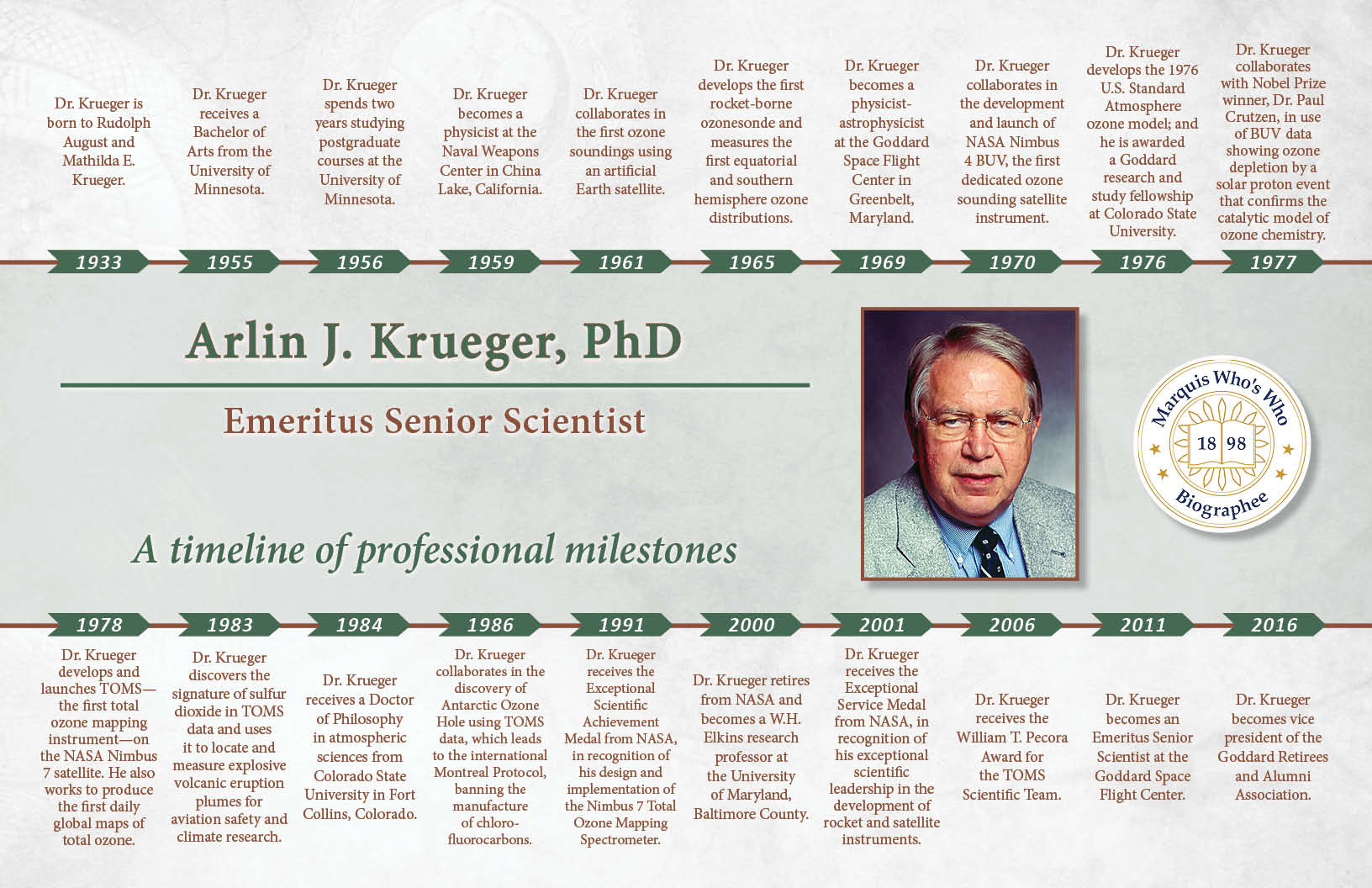1933
Dr. Krueger is born to Rudolph August and Mathilda E. Krueger.
1955
Dr. Krueger receives a Bachelor of Arts from the University of Minnesota.
1956
Dr. Krueger spends two years studying postgraduate courses at the University of Minnesota.
1959
Dr. Krueger becomes a physicist at the Naval Weapons Center in China Lake, California.
1961
Dr. Krueger collaborates in the first ozone soundings using an artificial Earth satellite.
1965
Dr. Krueger develops the first rocket-borne ozonesonde and measures the first equatorial and southern hemisphere ozone distributions.
1969
Dr. Krueger becomes a physicist-astrophysicist at the Goddard Space Flight Center in Greenbelt, Maryland.
1970
Dr. Krueger collaborates in the development and launch of NASA Nimbus 4 BUV, the first dedicated ozone sounding satellite instrument.
1976
Dr. Krueger develops the 1976 U.S. Standard Atmosphere ozone model; and he is awarded a Goddard research and study fellowship at Colorado State University.
1977
Dr. Krueger collaborates with Nobel Prize winner, Dr. Paul Crutzen, in use of BUV data showing ozone depletion by a solar proton event that confirms the catalytic model of ozone chemistry.
1978
Dr. Krueger develops and launches TOMS—the first total ozone mapping instrument—on the NASA Nimbus 7 satellite. He also works to produce the first daily global maps of total ozone.
1983
Dr. Krueger discovers the signature of sulfur dioxide in TOMS data and uses it to locate and measure explosive volcanic eruption plumes for aviation safety and climate research.
1984
Dr. Krueger receives a Doctor of Philosophy in atmospheric sciences from Colorado State University in Fort Collins, Colorado.
1986
Dr. Krueger collaborates in the discovery of Antarctic Ozone Hole using TOMS data, which leads to the international Montreal Protocol, banning the manufacture of chlorofluorocarbons.
1991
Dr. Krueger receives the Exceptional Scientific Achievement Medal from NASA, in recognition of his design and implementation of the Nimbus 7 Total Ozone Mapping Spectrometer.
2000
Dr. Krueger retires from NASA and becomes a W.H. Elkins research professor at the University of Maryland, Baltimore County.
2001
Dr. Krueger receives the Exceptional Service Medal from NASA, in recognition of his exceptional scientific leadership in the development of rocket and satellite instruments.
2006
Dr. Krueger receives the William T. Pecora Award for the TOMS Scientific Team.
2011
Dr. Krueger becomes an Emeritus Senior Scientist at the Goddard Space Flight Center.
2016
Dr. Krueger becomes vice president of the Goddard Retirees and Alumni Association.

